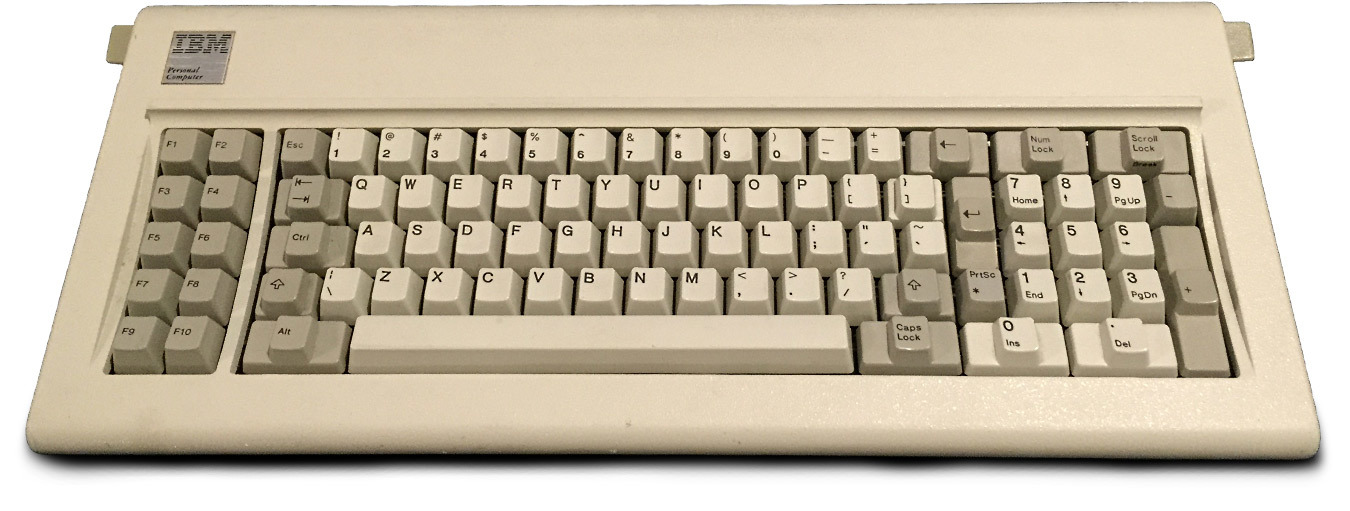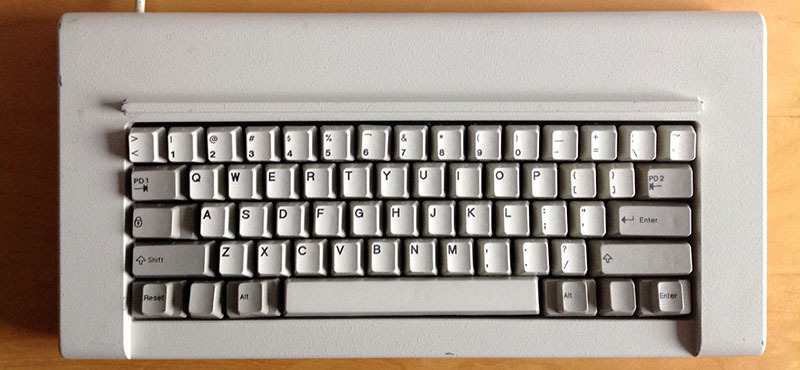Restore a classic IBM Model F keyboard

The original IBM Model F was sold with the IBM PC 5150 - the first IBM PC.
For many, the quality of the keyboard does not matter much: for them it is a cheap peripheral device no matter what manufacturer. But some people who work with the keyboard for 8-12 hours a day begin to realize that keyboards are different. Like a mechanic who buys wrenches of the same company, or a carpenter who prefers a planer 150 years ago, they realize that they used to do better tools than they do now. It is difficult to describe in words, but the old mechanical keyboards are not malleable, the keys are pressed clearly and accurately, you do not need to knock on them, they are more ergonomic. They even sound nicer.
Although in recent years, in the wake of the new fashion, manufacturers have released modern hi-end mechanical models, but none of them will surpass the best keyboard in the history of computer technology - the classic IBM Model F , which was produced in 1981-1994.
Today, it’s almost impossible to get the original IBM Model F keyboard, unless you are lucky enough to find one in a decommissioned warehouse or buy at auction for about $ 500. The keyboard has long been discontinued.
But lately, enthusiasts have made a lot of effortsto make an exact copy of such a mechanical keyboard - IBM Model F Kishsaver. To do this, I had to make new molds for making keys from plastic, develop circuit boards from scratch and repeat everything else that IBM did in the late 70s.
Mechanical keyboards
The first computer keyboards for Commodore 64, the original Macintosh, and the first PCs were very different from modern keyboards. Each key was equipped with a switch with a rather complicated spring mechanism. For example, in the DEC VT100 terminals, tricky springs from Hi-Tek were installed, in the original Macintosh, Commodore Amiga and Atari 800 - coil springs from Mitsumi.
IBM went its own way and used the achievements of its typewriter division, for which it had been manufacturing spring switches since the early 70s. Thus, the keys from the IBM Selectric typewriter were adapted for use in a computer keyboard.

The spring mechanism in an IBM Selectric typewriter
While other manufacturers were gradually abandoning the spring mechanism, IBM showed amazing durability and continued to release the IBM Model F. It first appeared on sale with the IBM System / 23 computer in August 1981, a month before the release of the first IBM PC. In 1985, IBM Model M replaced the IBM Model F, but the basic mechanism for closing the contacts in the key remained the same. It is this spring mechanism that provides a pleasant tactile sensation that is absent in modern keyboards.

Keyboard spring mechanism IBM Model F
IBM sold Lexmark's Model M production unit in 1991, and in 1996, employees of a former IBM factory in Lexington, Kentucky bought the rights and printing plates for Model M. and can now be bought at Unicomp at about the same price. as in 1986, as well as hundreds of other models of mechanical keyboards made at the factory in Lexington. But all of these models are based on Model M, while Model F's manufacturing technology seemed to be lost.
Kishsaver
At first glance, the Model F keyboard layout looks strange, like other keyboards of the 70-80s. In those days, the layout was constantly changing. For example, the location of the arrow keys in the form of an inverted letter "T" first appeared on the DEC LK201 keyboard in 1982. The button layout on the left - Control, Alt, Caps Lock and Tab - was not standardized until the mid-80s. The Windows key only appeared in 1994 (on the Microsoft Natural Keyboard).
At the end of the 80s, the layout of the keyboards was approved by the ANSI and ISO standards, but enthusiasts still produce keyboards where the keys are located not according to the standard, but more conveniently. The era of keyboard modding has come.

Happy hacking keyboard
Around 2012, rumors appeared in some major keyboard enthusiast forums that someone had made a strange copy of the IBM keyboard. It was small, with only 62 keys, made of metal and used the same folding springs in the switches as the IBM Model F. It was a keyboard for the IBM 4704, Part Number 6019284, which was made by a Canadian enthusiast under the nickname Kishy .



Kishsaver The
keyboard was named Kishsaver.
At the same time, the enthusiastic community was thinking about restoring the original IBM Model F keyboard. They decided to make open source controllers so that the ancient electronics in the IBM keyboard could be connected via USB.
As a basis, enthusiasts took the original IBM F77 Kishsaver.

Original IBM F77 Kishsaver keyboard

62-button replica IBM Model F
One of the engineers who was involved in the project restored many of these keyboards over the years. He carefully measured every part of the IBM Model F from his collection to make an order at one of the Chinese plants.
PCB reverse engineering was also a relatively simple task.

Kishsaver 62-Key Keyboard PCB Render Aluminum Keyboard Case

As in many similar projects, the greatest difficulties arose with the replication of the mechanical structure. It was necessary to make molds, to choose the correct type of plastic for conductive substrates in the spring mechanism. Enthusiasts managed to recreate the original mechanism exactly. Up to the point that if you have an old IBM Model F keyboard, you can safely replace any of the parts with a new one. Even the foam packaging for the keyboard made exactly the same as in the 80s.

Conductive Plastic Model F Switches
Reconstructing the 62-button IBM Model F can be called one of the main achievements of vintage computer enthusiasts. It is especially noteworthy due to the fact that now no manufacturer produces such keyboards.
Now "homemade" 62-button and 77-button IBM Model F are sold in the online store for $ 325 or $ 376.

Well, developers are thinking about how to bring the copy closer to the original. For example, I would like to make aluminum cases by casting. In any case, this case shows that even one maker is able to master such a difficult task as producing a replica of a device removed from production according to its own project.
